 Since my prior post about pruning a pee gee hydrangea, I have received numerous follow-up questions on why and how to prune other types of hydrangea. Most of the hydrangea in the garden are either mopheads or lace caps (pictured). These belong to the group Hydrangea macrophylla. Most macrophylla bloom on wood or stems more than a year old.
Since my prior post about pruning a pee gee hydrangea, I have received numerous follow-up questions on why and how to prune other types of hydrangea. Most of the hydrangea in the garden are either mopheads or lace caps (pictured). These belong to the group Hydrangea macrophylla. Most macrophylla bloom on wood or stems more than a year old.
 In late spring these can be pruned to remove dead wood. Since it is very difficult for me to distinguish between the dead and living wood in dormant hydrangeas, I wait until late April when the stems have begun to leaf out. Then I cut the dead wood at the base of the plant as far down as I can reach. This will allow plenty of new room for new shoots to emerge.
In late spring these can be pruned to remove dead wood. Since it is very difficult for me to distinguish between the dead and living wood in dormant hydrangeas, I wait until late April when the stems have begun to leaf out. Then I cut the dead wood at the base of the plant as far down as I can reach. This will allow plenty of new room for new shoots to emerge. If your hydrangea macrophylla (pictured on Goldberry Hill) is getting too big and you want to reduce its size, prune it in mid summer after it has bloomed. You can either cut back the stems or just take out some of the longest wood at the base of the shrub. By waiting until July, you will have blooms and give the shrub time to prepare new growth to flower the following year. You do not have to do this type of pruning unless you need the space. Naturally hydrangeas develop a nice rounded shape.
If your hydrangea macrophylla (pictured on Goldberry Hill) is getting too big and you want to reduce its size, prune it in mid summer after it has bloomed. You can either cut back the stems or just take out some of the longest wood at the base of the shrub. By waiting until July, you will have blooms and give the shrub time to prepare new growth to flower the following year. You do not have to do this type of pruning unless you need the space. Naturally hydrangeas develop a nice rounded shape. Although I grow many heirloom hydrangea cultivars, I also love the new ones that have come out which bloom on old and new wood. Endless Summer and Blushing Bride are two such hydrangea. These are particularly useful in areas where hydrangea are marginally hardy. If your hydrangea gets killed to the ground during the winter, new stems can grow in the spring which will flower the same year. This also allows you to cut them to the ground or cut them back in early spring if you want to keep them smaller. Anabelle hydrangea are treated the same way.










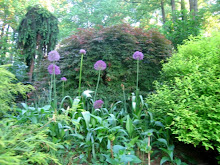
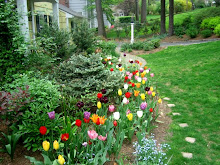
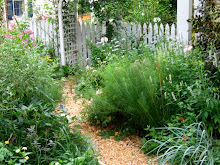
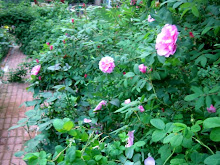

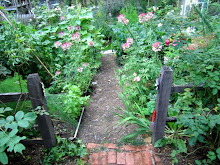

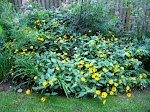





7 comments:
Is there a manner of determining what is old vs new wood on a dormant hydrangea?
Also, what should one do if a hydrangea is cut back too far while dormant, as happened to mine by over-zealous and well meaning house-sitters?
Came by your blog via Blotanicals, beautiful photos, really enjoyed reading your posts.
Having children seemed to switch something in my mind too, I came to really dislike the profession I had, and longed to do something with plants. I dreamed for 10 long years about changing professions, and then when the kids were a little older, took myself back to college one day a week, studying design and horticulture. The knack is to turn those dreams into realities, but that's something we gardeners are good at isn't it? From acorns might oaks are grown!
Ether--
The best thing to do is let the hydrangea recover naturally over the next season. They are really strong plants and no harm has come to it.
When I speak of new wood, I mean the wood which is grown in the current growing season. I find that as the wood ages the bark starts to exfoliate or peel off. The more peeling the older the wood probably is.
What a wonderful blog you have, I have enjoyed my visit very much!
Annie
Thanks for this post, quite helpful material.
I am in New Jersey (Zone 6b) and have deer in yard. How did you manage to grow so many hydrangea shrubs? Love the shrubs but deer and rabbits love it too.
Thanks,
New gardener
Post a Comment